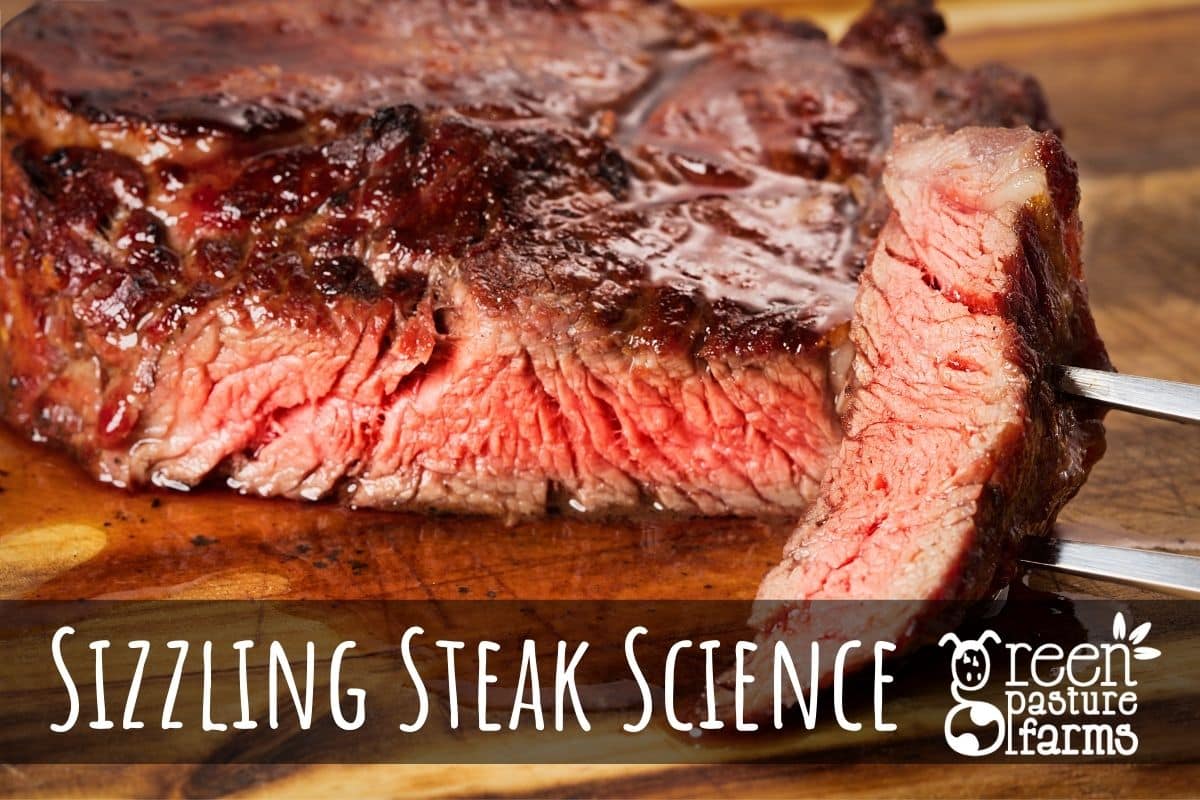Sizzling Steak Science
There are three secrets to cooking the perfect steak:
- Choose the best beef
- Select the perfect cut
- Cook it for the right time, at the right temperature
Why does how you cook your steak make such a big difference to how it tastes?
The answer lies in chemistry.
Cooking has two main effects on the composition of meat.
Firstly, the heat causes the meat’s fatty acids to break down into smaller more volatile particles. Some break away and become airborne, resulting in that delicious “meat in the oven” or “stewed meat” smell. Much of what we consider flavour is really aroma.
These fatty acid particles are generally responsible for aromas described as fatty and oily. One must liberate these molecules so they can reach our nose for a full flavour experience! Aldehydes, ketones and alcohols tantalise our tastebuds with beefiness.
The second way cooking creates flavour is via browning, AKA the Maillard reaction. Named after the French scientist who discovered it, this is a chemical reaction between amino acids and sugars when exposed to heat. From freshly baked bread to roast potatoes, it’s the Maillard reaction that gets your mouth watering. The compounds created are different, but always delicious!
When we brown meat and get that delicious roasted, nutty, barbecue flavour, it’s thanks to the Maillard reaction. This is what is responsible for that irresistible “meat on the bbq” smell. Be careful not to take it too far though, or you’ll end up with burnt bitter flavours.
A recent study by scientists at Texas A&M University found that the optimum temperature for producing fatty acid particles was around 177ºC for a prolonged period. The Maillard reaction however requires a higher temperature of 232ºC but just for a brief period to avoid charing.
For this reason, it’s best to sear the outside of your meat at a high temperature, then reduce the heat and cook low and slow. This will create the perfect balance of nutty, roasted Maillard compounds, and rich, juicy fatty acid particles!
The more fat there is in a cut, the greater you want these extremes to be. One of our grass-fed rib-eye steaks for example you’d want to sear on both sides at a high temperature, then reduce that heat and allow to cook through slowly to liberate all those fatty acids. One of our lean and tender grass-fed fillet steaks would be better cooked at a moderate temperature for a few minutes.
Check the product description for recommended cooking guidelines for all of our steaks.


